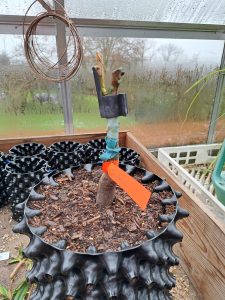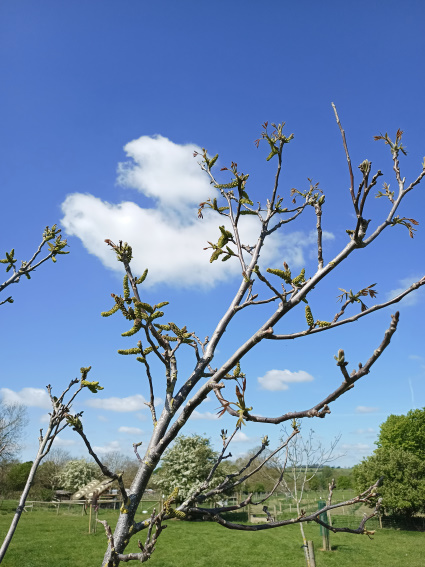We got hit hard in December with the coldest temperatures for a long time, -15C on the coldest night but quite a few days below -10, new pot grown small trees we’d planted into the orchard were hit badly and we lost about 8 rare cultivars.
Thankfully there were back-up plants for most of them and we can replant in the autumn. February was the driest we’ve ever seen, almost no rain, following by the wettest March on record, a wet start to April and then no rain for weeks.
Thankfully we got the irrigation running by May (late) and June has seen some decent rain the last 10 days, we will have lost some of the newly planted orchard as it was probably too wet but time had run out and we took a chance, replacements this winter I suspect.
On a positive note an early look at nut set seems positive but we won’t be sure until mid July. This winter was 2C colder than average and whilst spring frosts were few and far between and marginal we have noticed that male catkins finished early (wk2 June) and some cultivars like Broadview had virtually none. We have a lot of cultivars with late male pollen but clearly we’d like something later and have sought out some cultivars new to us that have very late pollen, time will tell with us I suspect. Hopefully we’ll get them next year, it’s a long term solution as they won’t produce much pollen for another 6-7 years.
The most exciting part is that many of the cultivars that have never fruited have a few this year, a chance to check they are what they claim (never certain!). It also focuses the mind on squirrel control along with some sort of extra protection for the few nuts on these new trees as well.
Finally we’ve also decided to put many of the newly grafted trees from the Netherlands into the ground instead of pots. Last summer was extreme here, virtually no rain from May to October, very hot (peaked over 40C) with an average temperature of almost 25C in July/August. Black pots act like mini ovens and even in the shade and irrigated they suffered so into the ground they have gone, and mulched with irrigation this year.
We still have some larger trees in pots (mostly Red walnuts) but the rest of the Juglans will be supplied BR when dormant.
All the Carya who really hate root disturbance are in Air-pots with drip irrigation, these pots can withstand the heat much better and all the new root is created away from the outside where it’s hottest. These trees should be available from September we hope.



